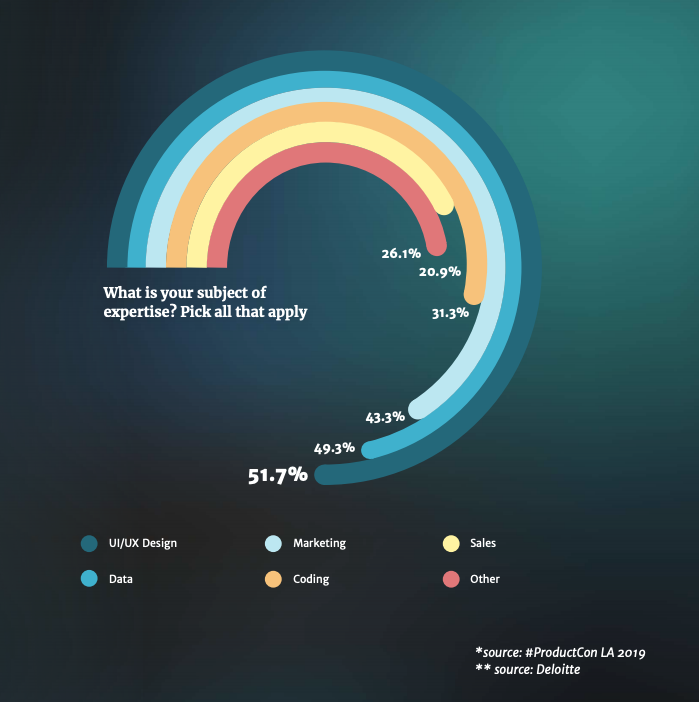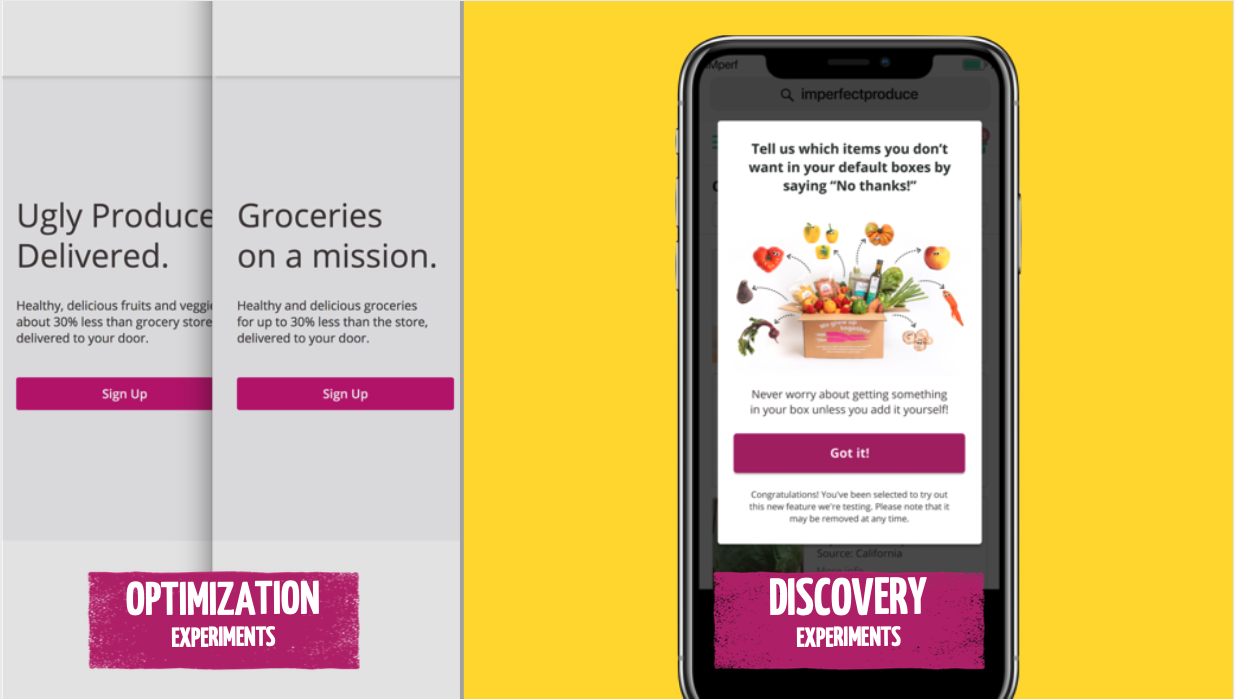Data and collaboration: a product leader’s guide to success
Product leaders must build strong cross-functional relationships grounded in reliable data. We've created a guide to share best practices from industry leaders.
Product leaders must build strong cross-functional relationships grounded in reliable data. We've created a guide to share best practices from industry leaders.
Your product roadmap and priorities undoubtedly look very different from what was outlined at the beginning of 2020. As companies continue to make sweeping changes, product leaders need to drive an even bigger impact with fewer resources.
COVID-19 has changed product priorities, forced a transition to remote workforces, and — now — collaboration across the business is more important than ever before. But collaboration is not enough. Building strong cross-functional relationships grounded in reliable data can empower product leaders to make the biggest business impact.
At Segment, we’ve always been curious to learn from inspiring product leaders. Earlier this year we created Growth Masters, an online community featuring video lessons from product leaders at Slack, Uber, Product School, Imperfect Foods, and more. One recurring theme across the insights that they shared is how collaborating around trusted customer data helped drive better product decisions.
We created this guide to share the best practices that these industry leaders use to collaborate with three key product stakeholders:
Executing your product strategy with engineering
Building and adapting your product roadmap with data teams
Ensuring retention through close collaboration with customer success
It’s a given that product and engineering will collaborate to bring new features to market. However, the relationship between these teams is most productive when each role can prioritize based on their specialized skill sets. Healthy relationships between product and engineering center around customer data, communication, and the elimination of tedious tasks. Successful PMs do not contribute code to launch features, but they should build up a skill set that helps engineers focus on business-critical work. “The good news is that these days, there is a lot of no-code or low code solutions that allow [product managers] to better do their jobs and communicate with technical teams,” shared Carlos González de Villaumbrosia, founder and CEO of Product School during a recent Growth Masters webinar. A key take away from González de Villaumbrosia is the need for technical proficiency that increases communication pathways between engineering and product. And his 2019 survey further validated that low-code tools could help product managers be better partners to engineering—as roughly 70% of product managers don’t have coding expertise.

From Carlos González de Villaumbrosia — Product Managers are a Jack of all trades.
Engineering and product teams experience the best relationship when they play to their strengths. Product leaders will not ship to prod daily, but they should be comfortable with low-code or no-code solutions that remove extra work from the engineering backlog. You may even find, like Scout My Trip, that flexible solutions allow your product team to collect even more valuable data and speed up your testing and iteration cycle.
Learn more:
Each product leader interviewed for Growth Masters has stressed the importance of having a partner-in-crime from analytics. “These days, it’s not about your gut feeling, it’s about data” insists Carlos González de Villaumbrosia. From ideation, PRD, execution, and general release, collaboration with data teams can help build deeper conviction for product decisions.
The first step is to build a relationship that encourages tight feedback loops. Andrew Chen, General Partner at Andreessen Horowitz, shared an example from Uber in his Growth Masters session. Chen suggested that tight collaboration fostered creativity and faster time to iteration. More specifically, he thinks this tight collaboration offers “opportunities to have ‘oh did you know that?’ moments.” Data-fueled innovation empowers each team to test new ideas and make better product decisions with confidence.
Next, you need to jointly explore if you need more or new data. Jamie DeLanghe, Director of Product at Slack, felt this pain when she had to relaunch the in-app search functionality for Slack. She shares in her Growth Masters session that as Slack had scaled, the product team realized that their original contextual search had been optimized for internal power-users dogfooding their product. DeLanghe notes “as we grow, and our user base looks less and less like us, we need to expand our data sources.”
The analytics team at Slack collaborated with the product team to conduct user research, create cohorts most interested in product updates, and test feature functionality and product usability. This cross-functional team iterated multiple times before finding the right search functionality as, “everything has to be validated by data before it goes out.” Overall, the partnership with analytics allowed the product team at Slack to test multiple options before shipping a search functionality that matched user needs and improved the product experience.
Similar to collaborating with engineers, product leaders can build a better relationship with data analysts by becoming more data-literate themselves. Consider adopting a product analytics tool like Mixpanel, Amplitude, or Pendo to start answering questions on your own and establish hypotheses you can further validate with analytics. You can also use these tools — like many other product leaders have done during COVID-19— to proactively avoid bigger problems, like churn.
Learn more:
Hear Andrew Chen's complete presentation on growth
Learn how Jamie DeLanghe makes bets with data
Watch Stephanie Evans walk through how Segment uses data to inform its roadmap
Learn how AppDynamics achieved product telemetry
You might feel like you have a good understanding of customer health because you have access to customer data and product analytics. But when you layer that knowledge with data from how customer success works, you have the opportunity to build a data-rich feedback loop that better informs your product strategy. Product leaders can create more conviction for an update or launch by using data from customer success.
Customer success teams hear qualitative product feedback all of the time and engage with your product in different ways. Their unique vantage point should be a critical input for product decisions. Patti Chen, VP of Product at Imperfect Foods, looks to these teams for help when prioritizing product testing— “these ideas might come from looking at trends in your data, or maybe it comes from customer surveys or interviews that your [other teams are] doing.”
The product team at Imperfect Foods runs tests that serve customers directly—most recently driving a 21% increase in customer retention—and also runs tests that empower the customer-facing organization. Most recently, they built a feature for their customer care associates to show the delivery status of an order in their primary success tool. With this update, the success team could see additional information in the tools they use every day and, as a result, they were able decrease in time-to-resolution for open support requests.
Chen proves that there is value in go-to-market collaboration “not just for your customer-facing experiments, but your internal customers as well.” Product success expands beyond metrics that you might see in a product analytics tool, so you’ll want to make sure customer-facing teams can quickly resolve customer issues and provide timely feedback internally.

Chen and her team affected major company-wide metrics by running discovery experiments (testing entirely new paradigms, rather than small tweaks). To adopt this mindset, review trends in your data, customer surveys, and insights from customer success. A quick way to identify potential wins is to identify and prioritize high-value support tickets, so that product and customer success can efficiently tackle customer needs. From there, develop experiments that have the potential for sweeping changes to make an impact.
Learn more
Watch Patti Chen's presentation on experimentation at Imperfect Foods
Identify and prioritize high-value support tickets using Personas and Ze
To build resilient products, your team must understand a customer’s needs now and anticipate their needs in the future. Specialized stakeholders in analytics can surface business opportunities, customer success can add additional context to the impact of a feature set, and engineering helps bring the product to life. In each instance, product teams should strive to remove work from their internal experts wherever possible by building up a technical skill set and improving processes by using good data to inform decisions. Your goal should be to make your teammates’ lives easier.
At the core of these cross-functional collaborations is reliable customer data. Get started today by signing up for a workspace, or log in and invite a teammate to collaborate with Segment data.

Our annual look at how attitudes, preferences, and experiences with personalization have evolved over the past year.